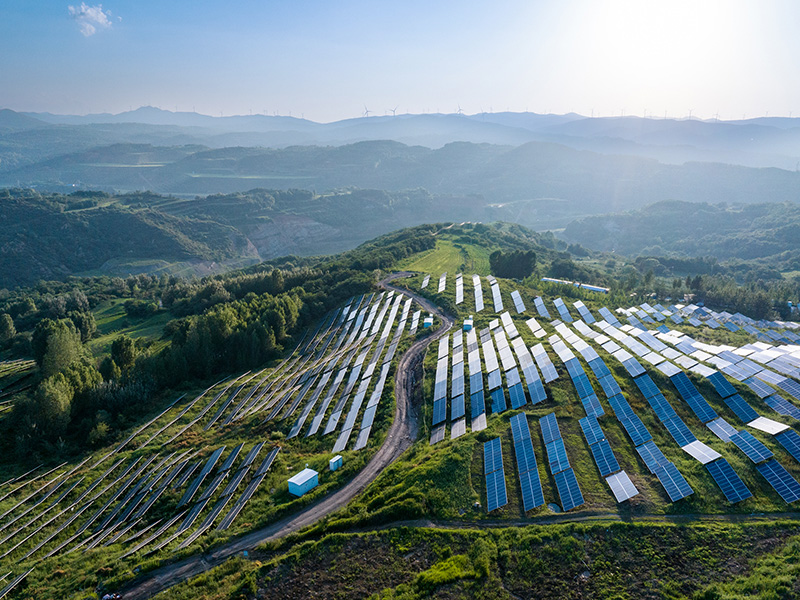
Photo by AlbertPego on iStock
Authors
-
Rachel Fleishman
Former Managing Director, Consumer Sectors and Business Transformation, BSR
Key Points
- The sustainability leader’s role is to chart transformation that will deliver results and build resilience in a turbulent economy.
- The most successful Chief Sustainability Officer (CSO) will be those who partner with others, across the company, the supply chain, and the industry.
- Rachel Fleishman, Managing Director, Consumer Sectors and Business Transformation, advises how CSOs can approach the myriad of tensions and complexities in 2024.
2024 is set to be yet another year of polycrises: violent conflicts, turbulent geopolitics, fractured societies, extreme weather, and unharnessed AI, to name just a few. The difficult news waves will cross the CEO’s desk and land on the laps of the Sustainability team, in conjunction with other teams. How you as a sustainability professional interpret these conflicts will be critical—both to your mental health, and the health of the company.
The sustainability leader’s job, broadly stated, is to chart a transformation that will deliver results, and build resilience, in a turbulent economy. It requires both mastery of the company’s core value proposition, and vigilance on external events. But it also requires facing the myriad tensions inherent in the sustainability remit. These start with the existential angst of internalizing what the current (climate, nature, fill-in-the-blank) crises portend for the viability of our economy and society—while at the same time responding to near-term issues like new mandatory disclosure requirements with C-suite accountability.
A second conundrum is how to establish ambition on issues like climate, nature and human rights. Anchoring goals in past practices can make them achievable but insufficient; scaling them to the scope of the problem can be logistically overwhelming—or so detractors will argue.
This introduces organizational capacity. A company fortunate enough to have a robust, competent team might be tempted to deploy it in the name of efficiency. The danger is leaving the rest of the company behind; in effect, missing an opportunity to build capacity. A related question: When should a sustainability leader take a stand internally and externally, and when should they lean back or ask permission?
While all executives face challenges, few have implications for the future of humanity. And few are as new to the executive table. The combination of diverse, serious issues and a lack of organizational muscle memory can prevent companies from acting expeditiously. Instead, they crescendo into crisis, putting companies at a disadvantage and sustainability leaders at risk of burnout.
If this sounds familiar, consider these 3 steps:
1: Start with yourself
A wise rabbi once advised me, “If you want to change the world, think in concentric circles—starting with yourself. How will you model the change you want to see? Then, how might you cascade it to your network, your community, and beyond?”
Here’s a way to start:
-
Self-assess. Are you getting enough sleep, nutrition, exercise, “downtime”? If not, fix it. Sanity and health are essential to the kind of change you seek to lead.
-
Name it. The stresses are real. Existential angst? Disruptive co-worker? Precise diagnoses lead to better solutions.
-
Prioritize your goals. Find quiet time to think through what you need to accomplish. What does “good” look like? What’s essential, and what’s nice to have? What roadblocks need to be overcome?
-
Take account of your assets. Outdated assumptions, rigid practices, and a lack of actionable information often stall corporate action. Consider how you might leverage personal attributes, structural opportunities (the corporate cadence of budgeting, risk assessment, investor meetings, etc.), and external events and actors as resources.
-
Reframe the narrative. Many of the key pivot points in sustainability stem from reframing the narrative. Revisit yours. Is it fit for purpose, given your newly refined goals?
2: Consolidate your Braintrust
Sustainability leaders have a lonely job. Few colleagues have had prior experience, and help can come with strings. You need a braintrust: like-minded professionals who can offer perspective, advice and the occasional pushback.
The braintrust I built in Hong Kong was called "The Breakfast Club”. Over tea and muffins, we shared market insights, confronted challenges and built career paths. Projects were born and catastrophes were avoided. Most importantly, we became each other’s go-to for the professional support we all craved.
You don’t need a formal convening. Build a roster of confidants, including:
-
Trusted advisors with whom you can debrief and detox—and then refocus and ideate.
-
Sustainability practitioners to share, strategize, and iteratively support you as you navigate the process ahead.
-
An opt-in network, ideally managed externally, providing expertise and a safe space to explore new ideas. BSR is uniquely suited for this purpose; provides an external perspective, invaluable to sense-check market observations and ground-truth operational strategies, intersectional expertise, with depth in both core issues and the critical interfaces (e.g. climate and justice, nature and supply chain); a focus on critical intersectional issues, such as its host of Collaborative Initiatives and exploration of Beyond Growth strategies.
3: Prepare your Pitch
A dog trainer once told me that canines need to hear something 75 times to learn it. The estimate for people varies from far less to far more.
Prepare your pitch and be able to tailor it. You’ll know it’s working when you start hearing your words emanate from others. Here are some tips:
-
Frame it. A succinct framing of the ambition, in a manner that resonates with your audience, provides an essential common point of reference.
-
Bound it. There’s a difference between riding a wave and boiling the ocean. Demonstrating that distinction can earn you trust – and enough interest from your stakeholders to continue the conversation.
-
Identify big goals. How you define your goals will have a bearing on which competencies, and colleagues, will be needed to achieve it. Consider your resources, and those you can influence. Then think about what it would take to institutionalize change. How might you optimize your resources and network to achieve the ambition you framed?
-
Propose a process. This was a big takeaway from my tenure leading sustainability in Asia for German chemical manufacturer BASF. Starting with the ‘right’ answer pressures colleagues to respond right away—and can end in disagreement or de-prioritization. But initiating a process allows them to opt in, or—implicitly—stay out of the way. A well-designed process yields a shared understanding of the challenges, priorities, and options, and coalesces toward a plan. Does this take more time? Yes. Use that time to loop back, with your team and your braintrust, to test assumptions and course-correct. The result: a better chance of organizational alignment (and forward movement).
2024 is set to be a rough news year. Taking a renewed approach can help you surf the oncoming waves—and redirect that energy into impact for your company, value chain, and industry.
BSR’s latest sustainability insights and events straight to your inbox.
Topics
Let’s talk about how BSR can help you to transform your business and achieve your sustainability goals.







